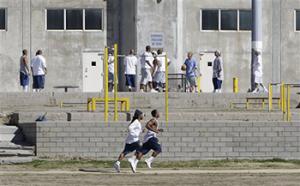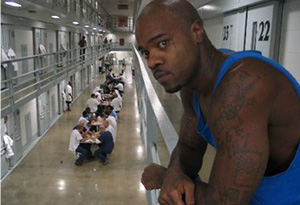
California will have to stop segregating prisoners by race based on a court settlement. Prison officials will have to balance safety concerns with the need to avoid racial stereotypes after the state agreed to end a long-standing policy that had been challenged in court and deemed unconstitutional by the U.S. Department of Justice.
Under a court settlement made public Wednesday night, the state will drop its practice of attempting to prevent further violence by segregating inmates by race after riots involving racially based prison gangs.
Attorneys representing inmates had challenged the policy as unfair because it targeted all inmates of a particular race even if they were not involved in the riot.
Now the Department of Corrections and Rehabilitation has to implement a new way of keeping the peace after fights while ensuring the constitutional rights of inmates who were not involved.
Under new rules, prisons can lock down every inmate in an affected area, or lock down individual inmates suspected of being involved in the incident or the gangs that were involved.
California was the only state with a race-based lockdown policy and now can employ practices used successfully in other states, said Rebekah Evenson, an attorney with the nonprofit Berkeley-based Prison Law Office, which represented inmates in the lawsuit.
"Nobody else has done race-based lockdowns, for the reason that racial classifications are just too broad of a brush," she said Thursday. "You're sweeping up people who have no connection to a gang other than the color of their skin."
Corrections spokesman Jeffrey Callison said in an email that the department's "first priority is the safety and security of everyone inside our prisons - staff, inmates and visitors."
"The decision about which inmates to restrict, and for how long, is made based on who is at risk and who is putting others at risk," he added. "Lockdowns and other limitations on inmate movement are not made on race."

The U.S. Justice Department agreed in a non-binding court filing last year, saying that the old policy violated 14th Amendment guarantees of equal protection under the law. The policy is similar to another California practice that the U.S. Supreme Court found to be discriminatory nearly a decade ago, segregating inmates by race in their cells and sleeping areas to prevent gang violence.
It is undisputed that many prison gangs, like street gangs, are predominantly made up individuals of a particular race or ethnicity, though they often have members of different racial or ethnic backgrounds.
In California, they include traditional prison gangs like the Aryan Brotherhood, the Black Guerilla Family, the Mexican Mafia, the Nazi Low Riders, the Northern Structure, and Nuestra Familia, as well as street-oriented gangs whose members spill into the prisons or are aligned with prison gangs. Those include Crips, Bloods, Northern Riders, MS-13, Norteños, Sureños, Florencia 13 and various white supremacist groups.
Nor is there any dispute that the gangs often battle in prisons as they fight for dominance or to control illegal activities, or because their members are sworn enemies. Of the more than 600 lockdowns imposed in California in a typical year, Evenson said at least a third are based on the inmates' race.
Yet the department's own gang experts said as part of the court challenge that a third to half the prison population isn't in gangs and doesn't engage in violence or gang activity, Evenson said.
California was "using race as a proxy for gang membership," she said.
The state still will be free to lock up known gang leaders to prevent a riot or after the fact, and will now use a point system to determine if individual inmates also qualify to be locked in their cells following a disturbance. That system will take into account whether the inmate is known to be affiliated with a gang or has previously engaged in riots or violence.
"They just can't do it on everybody who is the same race, or the predominant race, of the gang," Evenson said. "They just can't make an assumption that someone is in a gang because of how they look."
Copyright 2014 The Associated Press.
